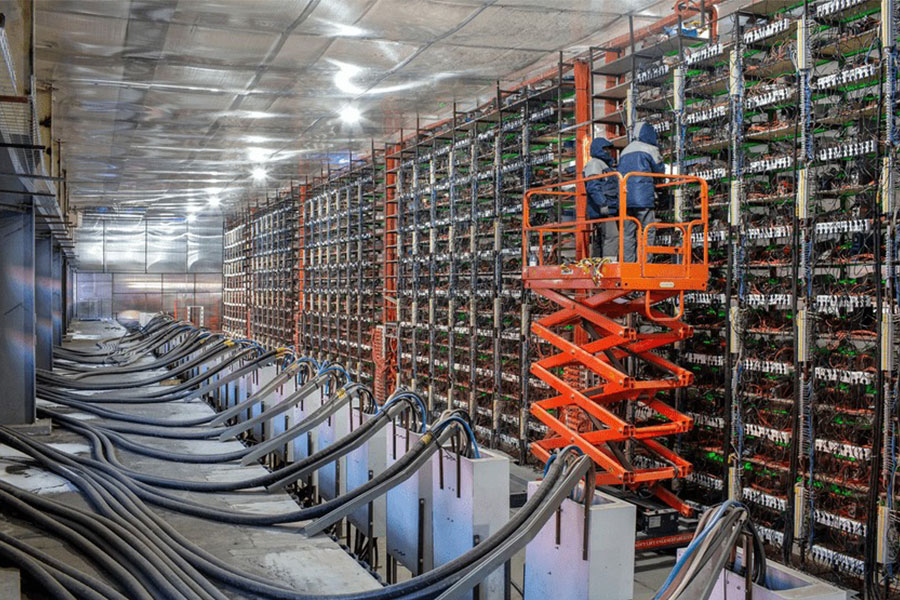
Editorial | Jul 24,2021
Jan 1 , 2022
By Nouriel Roubini
Despite dips and disruptions from new variants of COVID-19, 2021 turned out to be a relatively positive year for economies and markets in most parts of the world. Growth rose above its potential after the severe recession of 2020, and financial markets recovered robustly. This was especially the case in the United States, where stock markets reached new highs, owing partly to the US Federal Reserve’s ultra-loose monetary policy (though central banks in other advanced economies pursued radically accommodative policies of their own).
But 2022 may be more difficult. The pandemic is not over. Omicron may not be as virulent as previous variants – particularly in highly vaccinated advanced economies – but it is much more contagious, which means that hospitalisations and deaths will remain high. The resulting uncertainty and risk aversion will suppress demand and exacerbate supply-chain bottlenecks.
Together with excess savings, pent-up demand, and loose monetary and fiscal policies, those bottlenecks fueled inflation in 2021. Many of the central bankers who insisted that the inflationary surge was transitory have now conceded that it will persist. With varying degrees of urgency, they are planning to phase out unconventional monetary policies such as quantitative easing, so that they can start to normalise interest rates.
Central banks’ resolve will be tested if policy-rate hikes lead to shocks in the bond, credit, and stock markets. With such a massive build-up of private and public debt, markets may not be able to digest higher borrowing costs. If there is a tantrum, central banks would find themselves in a debt trap and probably would reverse course. That would make an upward shift in inflation expectations likely, with inflation becoming endemic.
The next year also brings mounting geopolitical and systemic risks. On the geopolitical front, there are three major threats to watch.
First, Russia is preparing to invade Ukraine, and it remains to be seen whether negotiations on a new regional security regime can prevent escalation of the threat. Although US President Joe Biden has promised more military aid for Ukraine and threatened harsher sanctions against Russia, he also has made clear that the US will not intervene directly to defend Ukraine against an attack. But the Russian economy has become more resilient to sanctions than it was in the past, so such threats may not dissuade Russian President Vladimir Putin. After all, some Western sanctions – such as a move to block the Nord Stream 2 gas pipeline – could even exacerbate Europe’s own energy shortages.
Second, the Sino-American cold war is getting colder. China increasing its military pressure on Taiwan and in the South China Sea (where many territorial disputes are brewing), and the broader decoupling between the Chinese and US economies, is accelerating. This development will have stagflationary consequences over time.
Third, Iran is now a threshold nuclear state. It has been rapidly enriching uranium to near-weapons grade, and the negotiations over a new or refurbished nuclear agreement have gone nowhere. As a result, Israel is openly considering strikes against Iranian nuclear facilities. Were that to happen, the stagflationary consequences would likely be worse than the oil-related geopolitical shocks of 1973 and 1979.
The new year also brings several systemic concerns. In 2021, heatwaves, fires, droughts, hurricanes, floods, typhoons, and other disasters laid bare the real-world implications of climate change. The COP26 climate summit in Glasgow offered mostly cheap talk, leaving the world on track to suffer a devastating three degrees Celsius of warming this century. Droughts are already driving a dangerous spike in food prices, and the effects of climate change will continue to worsen.
Making matters worse, the aggressive push to decarbonise the economy is leading to underinvestment in fossil-fuel capacity before there is a sufficient supply of renewable energy. This dynamic will generate much higher energy prices over time. Moreover, climate refugee flows toward the US, Europe, and other advanced economies will surge just as those countries are shutting their borders.
Against this background, political dysfunction is increasing in both advanced economies and emerging markets. The US midterm elections may offer a preview of the full-blown constitutional crisis – if not outright political violence – that could follow the presidential vote in 2024. The US is experiencing near-unprecedented levels of partisan polarization, gridlock, and radicalisation, all of which poses a serious systemic risk.
Populist parties (of both the far right and the far left) are growing stronger around the world, even in regions like Latin America, where populism has a disastrous history. Peru and Chile both elected radical leftist leaders in 2021, Brazil and Colombia may follow suit in 2022, and Argentina and Venezuela will remain on a path to financial ruin. Interest-rate normalisation by the Fed and other major central banks could cause financial shocks in these and other fragile emerging markets such as Turkey and Lebanon, not to mention the many developing countries with debt ratios that are already unsustainable.
As 2021 draws to a close, financial markets remain frothy, if not outright bubbly. Public and private equity are both expensive (with above-average price-to-earnings ratios); real-estate prices (both housing and rent) are high in the US and many other economies; and there is still a craze around meme stocks, crypto assets, and SPACs (special purpose acquisition companies). Government bond yields remain ultra-low, and credit spreads – both high-yield and high-grade – have been compressed, owing partly to direct and indirect support from central banks.
As long as central banks were in unconventional policy mode, the party could keep going. But the asset and credit bubbles may deflate in 2022 when policy normalisation starts. Moreover, inflation, slower growth, and geopolitical and systemic risks could create the conditions for a market correction in 2022. Come what may, investors are likely to remain on the edge of their seats for most of the year.
PUBLISHED ON
Jan 01,2022 [ VOL
22 , NO
1131]


Editorial | Jul 24,2021

Fortune News | Jun 10,2023

Verbatim | Nov 04,2023

Sponsored Contents | May 03,2022

Photo Gallery | 180137 Views | May 06,2019

Photo Gallery | 170334 Views | Apr 26,2019

Photo Gallery | 161349 Views | Oct 06,2021

My Opinion | 137245 Views | Aug 14,2021

Dec 22 , 2024 . By TIZITA SHEWAFERAW
Charged with transforming colossal state-owned enterprises into modern and competitiv...

Aug 18 , 2024 . By AKSAH ITALO
Although predictable Yonas Zerihun's job in the ride-hailing service is not immune to...

Jul 28 , 2024 . By TIZITA SHEWAFERAW
Unhabitual, perhaps too many, Samuel Gebreyohannes, 38, used to occasionally enjoy a couple of beers at breakfast. However, he recently swit...

Jul 13 , 2024 . By AKSAH ITALO
Investors who rely on tractors, trucks, and field vehicles for commuting, transporting commodities, and f...

Nov 1 , 2025
The National Bank of Ethiopia (NBE) issued a statement two weeks ago that appeared to...

Oct 25 , 2025
The regulatory machinery is on overdrive. In only two years, no fewer than 35 new pro...

Oct 18 , 2025
The political establishment, notably the ruling party and its top brass, has become p...

Oct 11 , 2025
Ladislas Farago, a roving Associated Press (AP) correspondent, arrived in Ethiopia in...

Nov 2 , 2025
The National Bank of Ethiopia (NBE) has scrapped the credit-growth ceiling that had s...

Nov 2 , 2025 . By SURAFEL MULUGETA
The burgeoning data mining industry is struggling with mounting concerns following th...

Nov 2 , 2025 . By YITBAREK GETACHEW
Berhan Bank has chosen a different route in its pursuit of a new headquarters, opting for a transitional building instea...

Nov 2 , 2025 . By BEZAWIT HULUAGER
Nib International Bank S.C. has found itself at the epicentre of a severe governance...